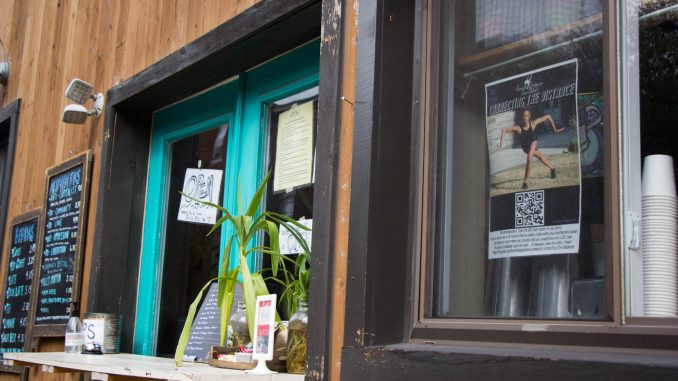
Christina Castro-Tauser wanted to let people experience dance individually and virtually, while still being surrounded by their community.
“Maybe you are surrounded by a car or the sounds of the spot,” she said “I feel like the sounds of the city, the wind, and the smells adds another layer to the show. It’s not as contained as being in a theatre, you might hear a siren go by and that’s another part to what you are experiencing, that is individual to you.”
Castro-Tauser, a dance professor, created a virtual interactive walking tour of dance performances titled “Expansions Presents: Connecting the Distance” that took participants through several Philadelphia neighborhoods from Sept. 10 through Oct. 4.
Through partnership with the Philadelphia Fringe Festival, ticket holders received a Google Map of poster locations with QR codes in neighborhoods like Mount Airy and Kensington.
Participants would scan the QR code at each of the 11 locations and watch pre-recorded dance performances, including a solo and a duet.
Each of the locations, like Centro Musical, on 5th Street near Lehigh Avenue, and Taller Puertorriqueño on 5th Street near Huntingdon, held significance to the dancers, Castro-Tauser said.
“Choosing the sites were just as important as the dances and the movement themselves,” she added. “A lot of them were small businesses that have a direct impact in the community.”
Visitors used the Google Map to walk to locations and scan the QR code reader. The QR code would take them to a webpage with the video of the solo performance that they could watch outside at the location.
Performances were pre-recorded via Zoom or on the Fringe Festival Stage with music composed mostly by Christopher Farrell, a dance professor at Boyer.
Courtney Pilgreen, a 2019 dance and business alumna and dancer in the project, had her recording located at Franny Lou’s Porch, a restaurant at Coral Street near York.
The location was significant to her as a Black woman because Franny Lou’s is named after two civil rights activists, Frances E.W. Harper and Fannie Lou Hamer, she said.
”It’s a different take on dance and how dance can completely evolve, I am excited to see the ideas people come up with because the possibilities are endless,” Pilgreen said.
The restaurant’s menu and aesthetic is designed to shed light on what these two powerful Black women contributed to the civil rights movement, she added.
”I love having my poster hanging at this restaurant, it symbolizes what we are continuously fighting for,” Pilgreen said. “These women are my ancestors and I am proud to be a representative of their wildest dreams.”
As a dancer, Pilgreen found it challenging to rehearse for the dance event via Zoom.
“It was definitely a major adjustment shift in what we are used to,” Pilgreen said. “We had rehearsals through Zoom, which was very difficult because you don’t know for sure which way they were, but just seeing how everything came out was worth all those months of rehearsals, questions, and confusion.”
Castro-Tauser purposefully created each piece to act as a standalone performance so participants who cannot complete the entire tour still experience a meaningful performance, she said.
Farrell saw the project as timely, an example of how the COVID-19 pandemic is pushing artists to find new ways to be creative, he said.
“Artists have to find a way to adapt, they always have, over the history of time,” Farrell said. “We adapt because we have to because we have something to say, and we will find a way to say it.”
The COVID-19 pandemic has impacted the performing arts industry in unforeseeable ways, leaving many performers uncertain about their livelihoods, Pilgreen said. She hopes her performance will inspire other dancers to continue to create.
“I am hoping this project sparks something in them to give them a new push, to realize still that not even a pandemic can stop artists and dancers from expressing themselves,” Pilgreen said.
At the height of the COVID-19 pandemic and political and social unrest, Castro-Tauser believes dance that is accessible to the community is more important than ever.
“Dance needs to step out and be involved in these communities,” she added. “It’s another outlet of self-expression, and it makes people aware of what needs to change and awareness of the community.”


Be the first to comment